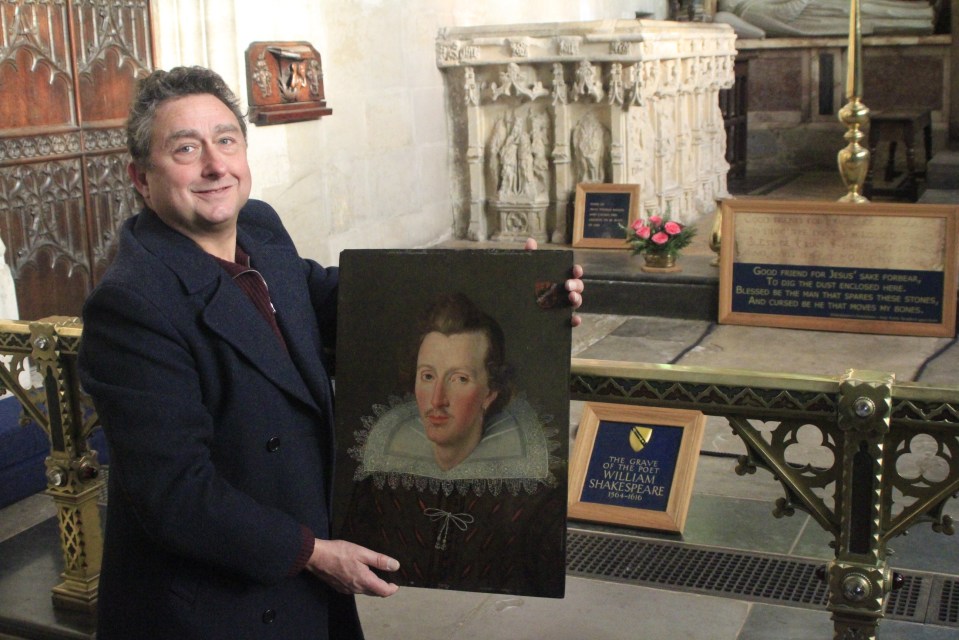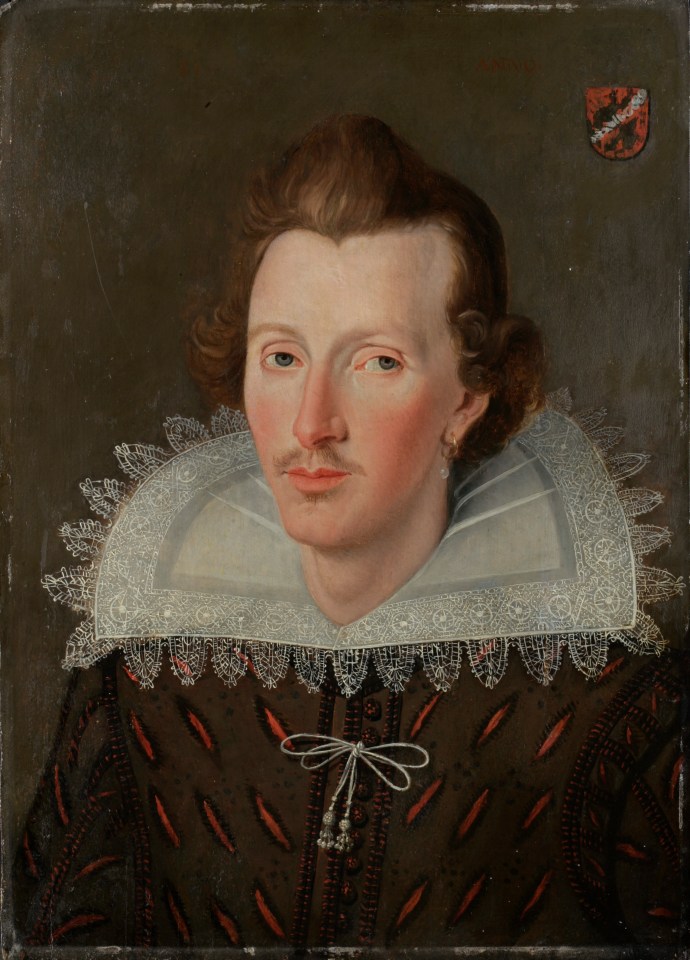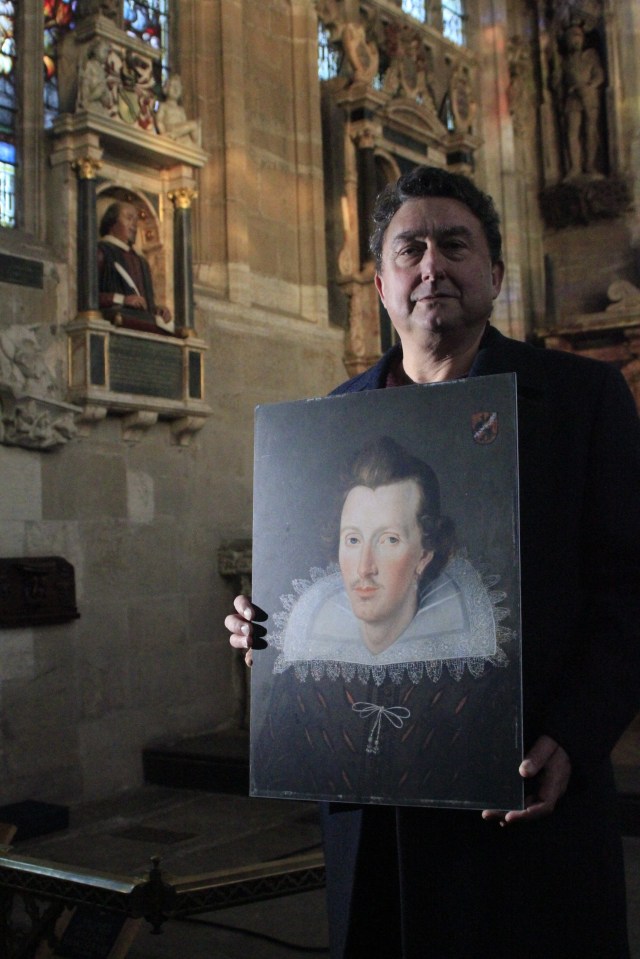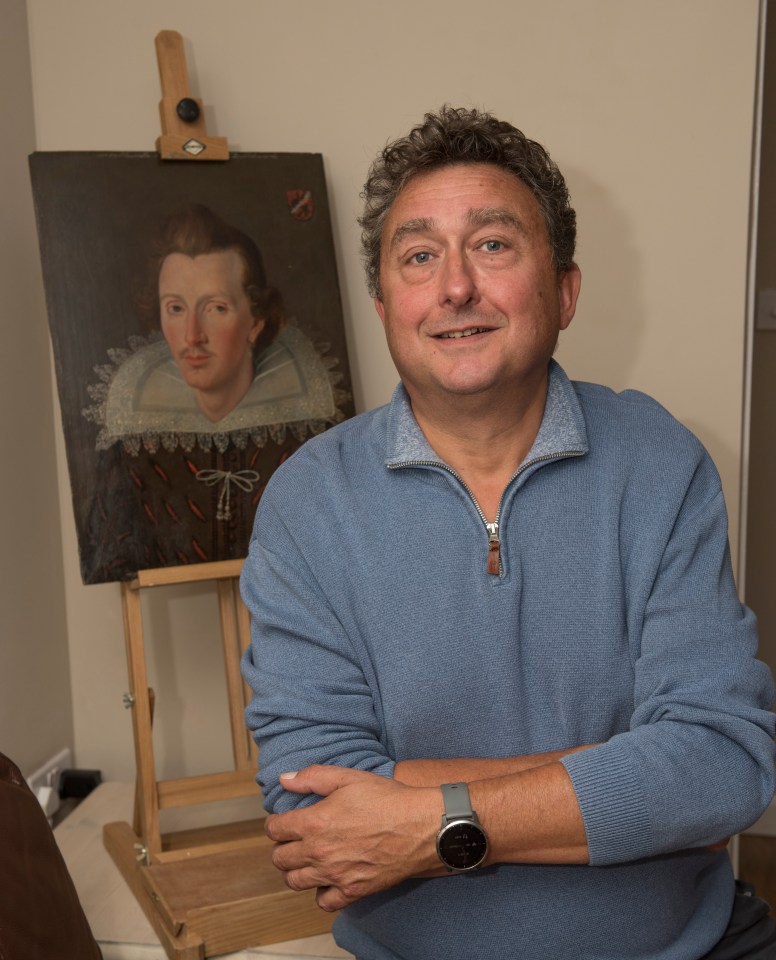Window Cleaner Unearths Possible First-Ever Portrait of William Shakespeare – Valued at £200 Million

For over five decades, an unremarkable portrait quietly resided in the corner of the Wadlow family home in Aylesbury. Lacking vibrant colors and prominent placement, it remained largely overlooked—until 58-year-old window cleaner Steven Wadlow began to probe its history. Driven by curiosity, Steven embarked on a journey to validate the identity of the sitter.
Originally purchased for £700 by Steven’s father in the 1960s, the painting transformed from a mere decoration into a potential treasure, believed to be one of the elusive portraits of William Shakespeare. “We may not live in a grand manor, but this painting has been a fixture in our home since my childhood,” Steven shared with The Sun. “To be honest, I never paid much attention to it—it was just there, a bit like those portraits in Scooby-Doo that seem to follow you around the room.”
This very painting is central to a new Netflix documentary titled The Stuff of Dreams, chronicling Steven’s thirteen-year quest to authenticate the identity of the sitter. While still working as a window cleaner, he has become consumed by the possibility that the oil painting is a rare likeness of the renowned playwright. If validated, this understated artwork could be valued at up to £200 million and join a select group of just three portraits of the Bard recognized as legitimate by experts worldwide.
Reflecting on his past, Steven remarked, “Shakespeare was a silent observer while I did my homework—though he didn’t help much! It wasn’t until 2012, when my parents watched Time Team and an image of one of Shakespeare’s portraits appeared, that my dad made the connection. He called me excitedly, saying, ‘I think there’s a chance the chap in our painting is Shakespeare.’ I was thrilled, but didn’t grasp the full extent of its significance at the time.”
Driven by a visitor’s comments about the painting being a potentially valuable copy, Steven’s casual interest morphed into a fervent obsession over the past thirteen years. “I started researching, and my passion for Shakespeare grew exponentially,” he admitted.

‘It’s Not Just About the Money’

By day, Steven cleans windows, but his evenings are dedicated to researching, learning, and seeking assistance to unravel the mystery of the painting. “If it was purely about financial gain, I would have sold it long ago,” he said. “This pursuit has encroached on my personal life, and my family has made sacrifices due to the time I’ve committed to this investigation.”
Despite the challenges, Steven maintains a balance between his window-cleaning business and his relentless quest. “While washing windows, I often chat with customers—some are thrilled to discuss the painting, while others are indifferent to Shakespeare or art,” he explained. “Initially, I feared people would mock my obsession, but the response has been overwhelmingly positive.”
‘I’m Just a Normal Person, So Experts Aren’t Listening’

Despite the supportive reactions from his community, Steven feels his profession and background hinder his credibility in the art world. “People often assume that because I’m a window cleaner, I lack intelligence,” he expressed. “While I don’t harbor resentment, it’s essential to highlight that academic credentials do not equate to knowledge or insight.”
He believes his working-class background has limited the serious consideration of his discovery by established institutions. “No one from the organizations responsible for Shakespeare’s image has reached out to me. I understand they may have been inundated with similar claims over the years,” he noted. “I can’t help but wonder if a scholar or art historian would receive a different response.”
“One expert outright dismissed my painting without even examining it, stating, ‘If it were Shakespeare, it would have been discovered long ago.’ That was disheartening,” he added. “I don’t want to appear paranoid, but I suspect that recognizing this portrait could disrupt established narratives about history. I simply want the painting to be acknowledged if it rightfully belongs in the canon.”
‘I Seek Answers to This Mystery’

A significant point of contention is that the well-known Chandos portrait depicts Shakespeare with a balding head and a dark beard, while Steven’s painting shows a man with a full head of auburn hair and no facial hair. In spite of skepticism, Steven’s artwork has undergone extensive testing, and he has consulted with leading experts to trace its lineage. Scientists from the Hamilton Kerr Institute in Cambridge confirmed that the wooden panel dates back to 1595, coinciding with the year Shakespeare would have been 31 years old. Notably, the number “31” is faintly visible within the painting.
Advanced facial recognition software compared Steven’s portrait to the Droeshout engraving—the only image confirmed by those who knew Shakespeare—and found a striking 91.2% match. In contrast, the Chandos Portrait scored just 88%, while the Cobbe portrait, long debated to depict Shakespeare, only achieved an 84% match. Esteemed art experts, who previously worked on uncovering the layers of the Mona Lisa, have also backed Steven’s hypothesis after examining the painting’s underlying layers with laser technology.
Other artistic elements further strengthen the case for Shakespeare. Experts at UCL suggest that the lace ruff seen in the painting may have been added later to elevate the sitter’s status. Moreover, the painting features an unidentified coat of arms, which the family received after Shakespeare’s death, although they had been pursuing one during his lifetime. There are additional historical ties to Buckinghamshire’s Great Tew Manor, known to have housed the Chandos portrait and a now-missing Shakespeare oil on canvas from 1595, referenced in historical accounts. This same lost portrait is believed to have inspired the Droeshout engraving, widely accepted as Shakespeare’s only verified image.
‘I Have a Deep Connection to This Painting’

If Steven’s theory holds true, the painting could be worth an astounding fortune. “I wouldn’t expect to receive the full £200 million. If someone offered £50 million, would I sell? Honestly, I don’t know,” he admitted. “I’m not motivated by greed, so I might be foolish to refuse. But I do feel a strong attachment to it.”
However, financial gain is secondary to Steven. “If it turns out not to be Shakespeare, I would be disappointed. But even if that were the case, it would still be fascinating to discover its true identity,” he reflected. “I would still want to delve into the history of whoever the sitter turns out to be.”
‘I Aspire to Become an Art Historian’

As The Stuff of Dreams garners international attention, Steven is optimistic that experts will reconsider his claims and reignite the conversation surrounding the painting. “I’ve received countless messages from individuals around the globe who are convinced my painting is indeed Shakespeare,” he shared. “Even actors involved in Shakespearean productions have reached out, which has been incredibly rewarding.”

This journey has irrevocably altered Steven’s life. “Before this began over twelve years ago, I knew little about Shakespeare and had no real interest in his work,” he admitted. “Now, I could probably participate in a Mastermind quiz on the topic—without trying to sound boastful.” He added, “I’ve traveled to places I never would have without this experience and met many experts in the field.”
If he were to sell the painting and secure a fortune, Steven expressed a desire to transition into art identification, a field he has grown to love. “One thing is clear: I won’t give up until I find definitive answers. If I didn’t believe I had compelling evidence for it being Shakespeare, I would have stopped years ago,” he affirmed. “I know I can be stubborn at times, but unless someone presents concrete evidence disproving my claim, I’ll persist.”
He concluded with a hopeful sentiment: “I have a framed copy of the painting in my home, and I often look at it, saying, ‘Come on, Shakey, please help us out here.’ I believe that with enough tenacity, I can encourage others to listen and help solve this mystery once and for all.”

The Stuff of Dreams is currently available for streaming on Netflix.




